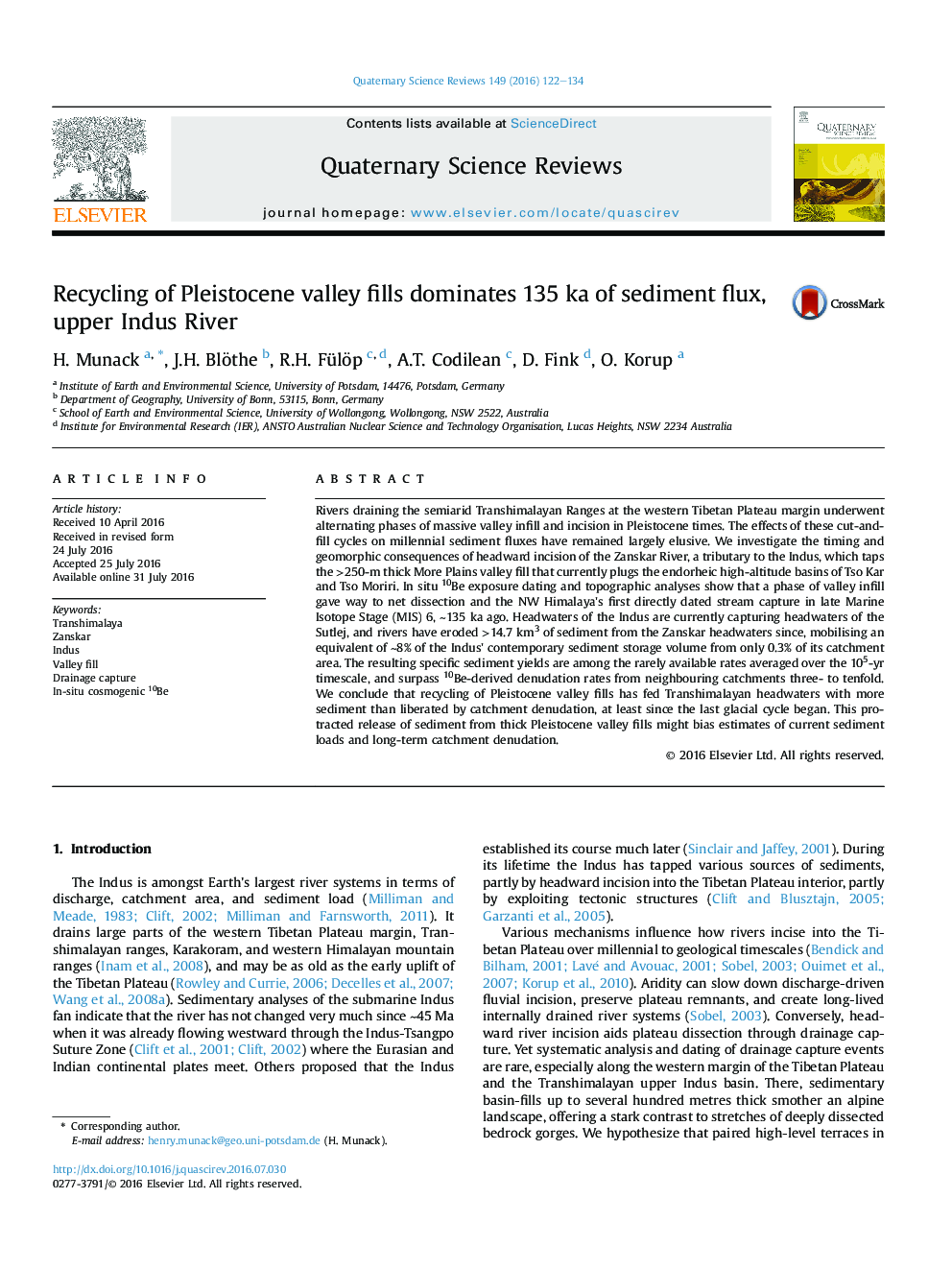| Article ID | Journal | Published Year | Pages | File Type |
|---|---|---|---|---|
| 6445993 | Quaternary Science Reviews | 2016 | 13 Pages |
Abstract
Rivers draining the semiarid Transhimalayan Ranges at the western Tibetan Plateau margin underwent alternating phases of massive valley infill and incision in Pleistocene times. The effects of these cut-and-fill cycles on millennial sediment fluxes have remained largely elusive. We investigate the timing and geomorphic consequences of headward incision of the Zanskar River, a tributary to the Indus, which taps the >250-m thick More Plains valley fill that currently plugs the endorheic high-altitude basins of Tso Kar and Tso Moriri. In situ 10Be exposure dating and topographic analyses show that a phase of valley infill gave way to net dissection and the NW Himalaya's first directly dated stream capture in late Marine Isotope Stage (MIS) 6, â¼135 ka ago. Headwaters of the Indus are currently capturing headwaters of the Sutlej, and rivers have eroded >14.7Â km3 of sediment from the Zanskar headwaters since, mobilising an equivalent of â¼8% of the Indus' contemporary sediment storage volume from only 0.3% of its catchment area. The resulting specific sediment yields are among the rarely available rates averaged over the 105-yr timescale, and surpass 10Be-derived denudation rates from neighbouring catchments three- to tenfold. We conclude that recycling of Pleistocene valley fills has fed Transhimalayan headwaters with more sediment than liberated by catchment denudation, at least since the last glacial cycle began. This protracted release of sediment from thick Pleistocene valley fills might bias estimates of current sediment loads and long-term catchment denudation.
Keywords
Related Topics
Physical Sciences and Engineering
Earth and Planetary Sciences
Geology
Authors
H. Munack, J.H. Blöthe, R.H. Fülöp, A.T. Codilean, D. Fink, O. Korup,
